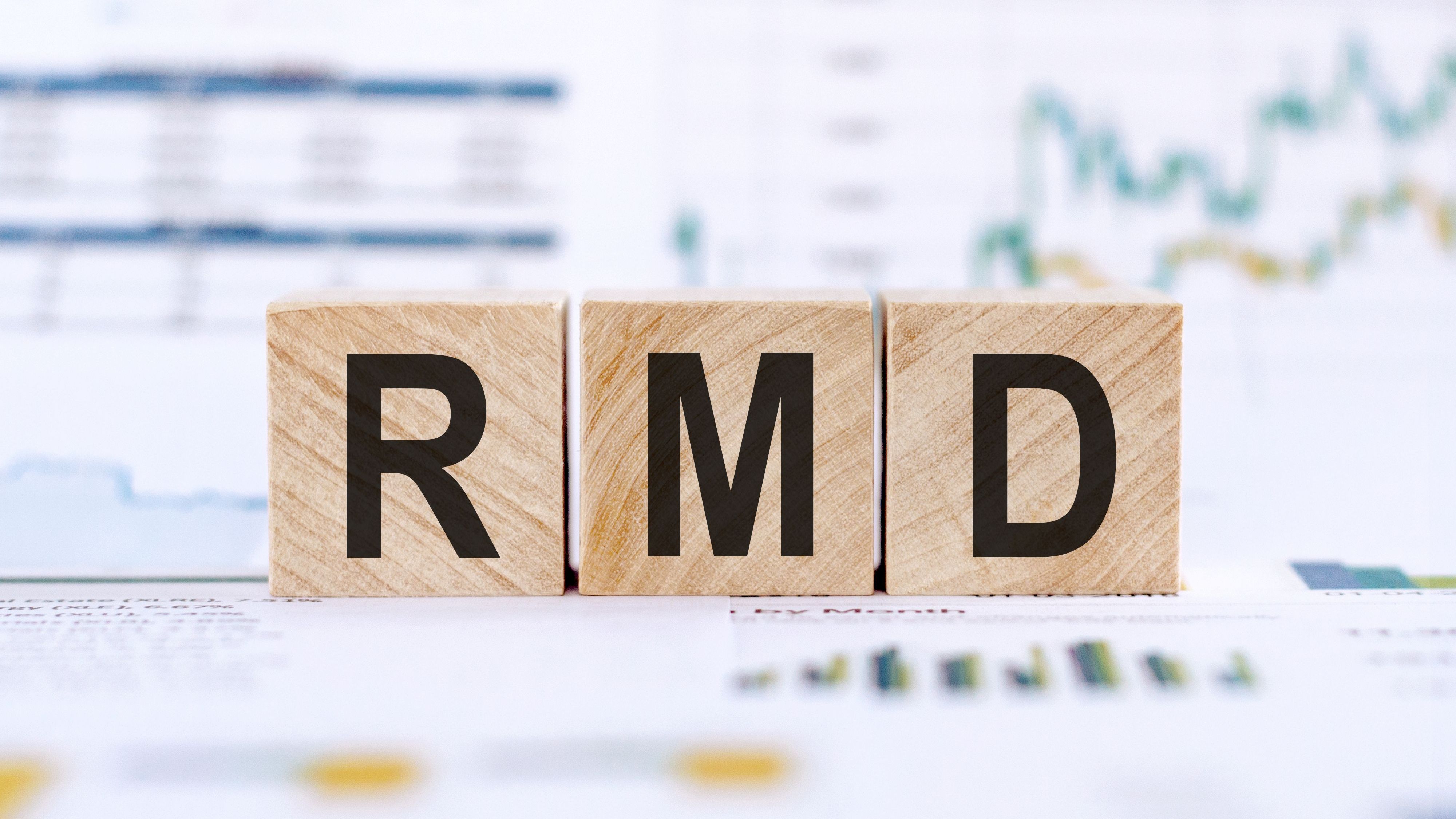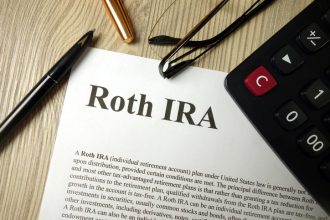Retirees with significant assets often have to plan around required minimum distributions (RMDs).
If you already have sufficient income and don’t need the money in a pre-tax portfolio, annual RMDs can cost you significantly in otherwise-unnecessary taxes. For example, say that you have $1 million in a 401(k). The IRS could require you to withdraw tens of thousands of dollars from this account each year, taxing all of it. For households that don’t need that money yet, this can lead to a unnecessarily high tax bill.
Moving your money into a Roth IRA can help you save on those taxes in retirement, since this money has already been taxed and isn’t subject to RMDs. However, making that transfer will raise your taxes considerably up front, so it’s important to make sure this won’t actually cost you more money in the long run.
What Are RMDs?

Starting at age 73, individuals who hold a pre-tax retirement account must begin withdrawing a minimum amount each year. This rule applies on a per-account basis. For example, if an individual owns both a 401(k) and an IRA they would need to take a minimum withdrawal from both accounts every year. Each year’s RMD amount depends on the value of the individual account and the holder’s age.
RMDs are designed to trigger a tax event. As with all withdrawals from a pre-tax portfolio, RMDs are taxed as ordinary income. The IRS wants individuals to eventually pay taxes on the income saved up in these portfolios, so it requires you to make at least some withdrawals in retirement. For this reason, RMDs do not apply to Roth IRA and Roth 401(k)s.
RMDs can significantly increase a household’s taxes. For example, say that you are 80 years old with a $500,000 IRA that you don’t currently need to support your lifestyle and spending. The IRS will nevertheless require you to withdraw $24,752 from this account, all of which will count toward your taxable income for the year. Not only will you owe taxes on this money, but you will have to choose between selling the assets (and sacrificing future growth) or raising the tax money from another source. Keep in mind that a financial advisor can help you calculate how RMDs will impact your tax situation and how best to handle them.
Managing RMDs With Roth Portfolios

Roth IRAs are not subject to RMD rules, so converting a pre-tax account to a Roth portfolio is generally the easiest way to avoid minimum distributions.
For example, say that you are 62 with a $1 million 401(k). Disregarding contributions and withdrawals, at an 8% rate of growth, this portfolio could be worth $2.33 million by age 73. The IRS would require you to withdraw $87,924 from that account that year, putting an individual near the top of the 22% tax bracket even before accounting for any income from Social Security and other retirement portfolios.
If you held this money in a Roth portfolio, on the other hand, you would be able to leave it in place until you needed it. It could be set aside for later in life and continue to grow without withdrawals or taxes.
The main problem with a Roth conversion is that, in exchange for saving on taxes later, you must pay income taxes now. Any money that you convert into a Roth IRA must be included in that year’s taxable income. So, for example, say that you earned $100,000 in 2024 and converted $1 million from your 401(k) to a Roth IRA in the same year. Your taxable income for 2024 would be $1.1 million, coming to nearly $360,000 in federal income taxes, assuming you take the standard deduction.
To manage this you can do what’s called a staggered or gradual conversion. Instead of rolling over your entire portfolio, you can transition a portion of it at a time. This allows you to make sure that you never trigger a larger tax bill than you can handle each year and that you don’t vault into a higher tax bracket. If you are over 59 ½ years old, you can also cash out a portion of your account to raise money for those taxes. This, of course, would reduce your savings for retirement.
For example, say that you make $100,000 per year and have $1 million in your 401(k) at age 62. If you convert $100,000 per year, you would increase your taxable income to $200,000 per year and pay approximately $38,000 in federal income taxes. By age 73 you would likely still have a considerable amount in your 401(k), as account growth would partially offset your conversions, but you would have the $1 million in an account that’s free of both taxes and RMD requirements. But if you need more help estimating your tax liability and the impact of RMDs, consider speaking with a financial advisor.
Before You Do a Roth Conversion
Just, be careful of two issues.
First, Roth contributions cannot be withdrawn for five years after they are made. This five-year rule applies separately to each conversion. So if you make a series of staggered conversions – one per year – you’ll have to wait five years after the first conversion to withdraw that money, another five years to withdraw money from your second conversion and so on. Violating this rule will trigger taxes and a 10% penalty.
Second, these taxes will add up. Each year you will pay income taxes on the money that you convert to your Roth IRA. Depending on your tax bracket when you make these conversions, your up-front taxes might well be higher than the income taxes you would pay on minimum distributions in retirement. Consider speaking with a financial advisor to make sure that you actually will benefit in the long run, because if you aren’t careful this strategy can cost more than it will save.
Bottom Line
Staggered conversions from a 401(k) to a Roth IRA can either reduce or eliminate the need for required minimum distributions (RMDs) while also saving you money on each year’s tax bill. However, if you are already nearing retirement, make sure that your up-front taxes won’t cost you more than the distribution taxes would in retirement.
Tips for Managing RMDs
- The IRS only requires you to take required minimum distributions by the end of each year. When and how you take these withdrawals is up to you, so make sure you structure these distributions to your maximum benefit.
- A financial advisor can help you build a comprehensive retirement plan that accounts for your RMDs and their tax impact. Finding a financial advisor doesn’t have to be hard. SmartAsset’s free tool matches you with up to three vetted financial advisors who serve your area, and you can have a free introductory call with your advisor matches to decide which one you feel is right for you. If you’re ready to find an advisor who can help you achieve your financial goals, get started now.
Photo credit: ©iStock.com/PeopleImages, ©iStock.com/Nastassia Samal, ©iStock.com/ferrantraite
Read the full article here














